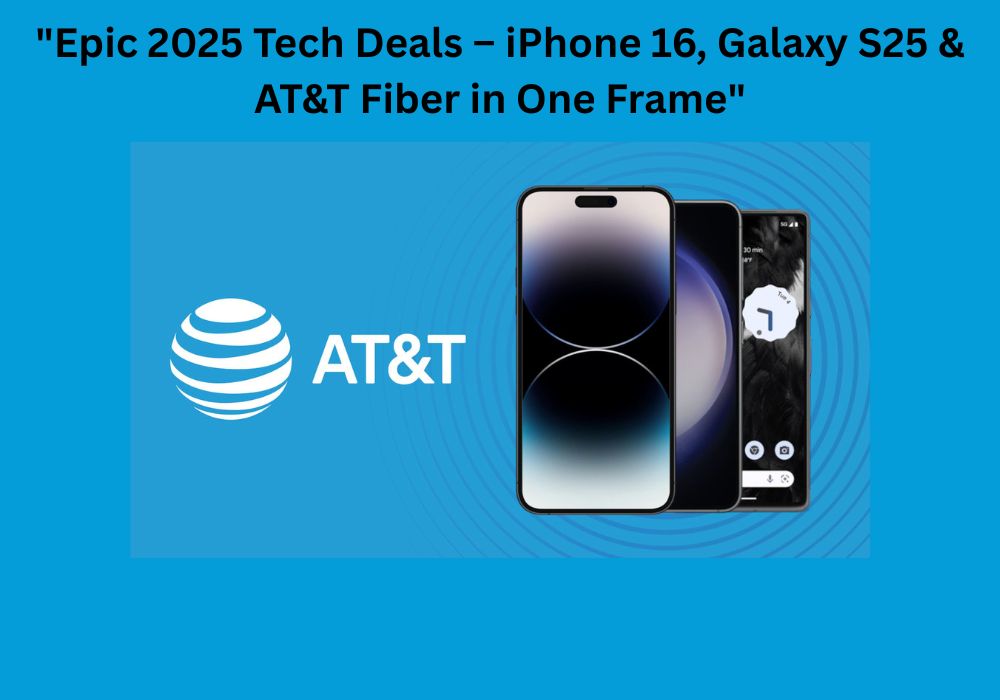Technology
Web Testing Tools: Your Ultimate Guide to Quality Website Assurance

In the fast-paced digital world, websites are expected to be responsive, secure, and user-friendly — all at once. Whether you’re launching a simple blog or managing a complex e-commerce platform, web testing tools are essential for ensuring your site performs flawlessly.
This guide will walk you through what web testing tools are, why they matter, and the best tools available today.
What Are Web Testing Tools?
Web testing tools are software applications or platforms designed to evaluate various aspects of a website. These tools enable developers, testers, and QA teams to verify that a website or web application:
-
Functions correctly (functional testing)
-
Loads quickly (performance testing)
-
Looks good across devices (responsive testing)
-
Stays secure (security testing)
From manual testing suites to automated testing frameworks, these tools are crucial in catching bugs, improving UX, and boosting SEO rankings.
Why Use Web Testing Tools?
1. Ensure Functionality
Web testing tools validate whether buttons, forms, navigation menus, and interactive elements work as expected.
2. Improve User Experience
By checking responsiveness and accessibility, they help deliver seamless experiences across devices and browsers.
3. Enhance Security
Many tools offer penetration testing or vulnerability scanning to identify and fix weak points.
4. Boost Performance
Tools can simulate traffic and measure load times, helping you optimize site speed — a vital factor in SEO and conversions.
Categories of Web Testing Tools
| Testing Category | Purpose | Tools Examples |
|---|---|---|
| Functional Testing | Test core features like forms, logins, and buttons | Selenium, TestComplete |
| Performance Testing | Assess speed, stress, and scalability | JMeter, LoadNinja |
| Responsive Testing | Ensure proper display on different devices | BrowserStack, LambdaTest |
| Security Testing | Identify vulnerabilities | OWASP ZAP, Acunetix |
| Usability Testing | Gather real-user feedback | Crazy Egg, Hotjar |
| Regression Testing | Ensure new updates don’t break existing features | TestNG, QTP |
Top Web Testing Tools in 2025
1. Selenium
A highly popular open-source solution for automating browser-based testing.
Key Features:
-
Supports multiple languages: Java, Python, C#
-
Cross-browser compatibility
-
Integrates with CI/CD tools like Jenkins
Best For: Automation engineers and testers working on dynamic web apps
2. Cypress
Highlights:
-
Operates directly in the browser
-
Great for testing modern front-end frameworks like React or Angular
-
Automatic waiting and real-time reloads
Ideal for: Agile teams and contemporary web applications.
3. TestComplete
A commercial testing tool with support for both scripted and scriptless testing.
Key Benefits:
-
AI-based object recognition
-
Integrates with Jenkins, Jira, Git
-
Reusable test scripts across desktop, mobile, and web
4. BrowserStack
Advantages:
-
No setup needed – test instantly in the cloud
-
Access to 3,000+ real browsers and devices
-
Supports Selenium and Cypress
Best For: Manual and automated cross-browser testing
5. OWASP ZAP (Zed Attack Proxy)
An open-source security testing tool developed and maintained by the Open Web Application Security Project (OWASP).
Key Features:
-
Automatic vulnerability scanning
-
Passive and active scanning options
-
Works well with CI/CD pipelines
Best For: Security-conscious developers and pentesters
Choosing the Right Web Testing Tool: What to Consider
When selecting a web testing tool, evaluate the following:
-
Project Needs: Are you focusing on automation, security, or user experience testing?
-
Team Skills: Are your team members developers, QA testers, or non-tech users?
-
Budget Constraints: Open-source tools vs. premium platforms
-
Integration Capabilities: Does it support your tech stack (CI/CD, version control)?
-
Scalability: Can it handle the size and traffic of your growing web app?
How Web Testing Tools Fit into Agile and DevOps
They help teams:
-
Run tests in every development sprint
-
Integrate with CI/CD pipelines
-
Deliver faster with fewer bugs
Automation + Web Testing = Continuous Quality
Benefits of Using Web Testing Tools
-
Faster issue detection
-
Increased efficiency through automation
-
Improved customer satisfaction and trust
-
Improved SEO rankings, driven by enhanced performance and accessibility testing.
-
Reduced downtime and deployment risk
Challenges in Web Testing
-
Browser compatibility: Ensuring consistent experiences across browsers
-
Mobile responsiveness: Testing devices with different OS, screen sizes, and resolutions
-
Dynamic content: Ajax and JavaScript-heavy sites can be tricky to test
Solution: Use tools like BrowserStack, Cypress, and Selenium Grid for robust testing coverage.
FAQs
Are web testing tools only for developers?
No — while many are developer-friendly, tools like Test Complete or Browser Stack cater to non-tech users too.
Can I test my site for free?
Absolutely—open-source tools such as Selenium, Cypress, and OWASP ZAP are available at no cost.
Which tool is best for mobile website testing?
BrowserStack and LambdaTest are excellent for real-device testing.
Do web testing tools help with SEO?
Indirectly, yes. Tools that improve speed, fix bugs, and ensure accessibility positively impact your SEO rankings.
Is automation better than manual testing?
Automation excels at handling repetitive tasks, whereas manual testing is ideal for assessing usability and conducting exploratory testing.
Conclusion
Web testing tools are no longer optional — they’re a necessity for any business serious about delivering high-quality, secure, and responsive websites. Whether you’re a solo developer or part of an enterprise DevOps team, choosing the right set of tools can significantly reduce errors, improve user satisfaction, and streamline your deployment process.
Invest in smart web testing today — and your users (and Google rankings) will thank you tomorrow.
READ ALSO:
Msafely: The Ultimate Solution for Discreet Phone Monitoring and Safety
Business
Top PLG Supplies to Supercharge Your Product-Led Growth Strategy in 2025

In today’s SaaS-driven ecosystem, Product-Led Growth (PLG) is more than just a strategy—it’s the engine driving user acquisition, retention, and expansion. At the heart of this model lies a set of tools and platforms commonly referred to as “PLG supplies.” These solutions streamline everything from onboarding to analytics, helping businesses unlock true scalability without relying on traditional sales pipelines.
This guide explores the most effective PLG supplies available today, showing how each can enhance your product experience and accelerate growth.
What Are PLG Supplies and Why Do They Matter?
PLG supplies refer to the tools and technologies that support a product-led approach to growth. Unlike sales-led strategies, PLG empowers users to discover, try, and buy your product directly.
With the right PLG stack, companies can improve user onboarding, monitor engagement, and drive conversions through product experience. These tools ensure that your product effectively sells itself.
Why does this matter? Because in 2025, user expectations demand seamless digital experiences. PLG supplies help businesses meet those expectations while cutting customer acquisition costs and boosting retention.
Core Categories of PLG Supplies
1. Product Onboarding Tools
First impressions matter. Onboarding tools guide new users through the product, ensuring they reach the “aha” moment quickly.
No-code platforms like Userpilot and Appcues allow product teams to create onboarding flows without engineering support.
Interactive walkthroughs, tooltips, and checklists can significantly increase user activation and reduce churn from the start.
2. Product Analytics Solutions
Understanding how users interact with your product is key to improving it. That’s where analytics platforms come in.
Solutions like Mixpanel and Amplitude let teams track user behavior, feature adoption, and drop-off points in real time.
Armed with these insights, teams can make data-informed decisions, leading to higher engagement and better retention.
3. In-App Messaging Platforms
Real-time communication enhances the user journey. In-app messaging tools like Intercom and Drift engage users at the right moment.
These tools allow for contextual onboarding nudges, feature announcements, and customer support.
Personalized messages triggered by user actions improve product adoption and build stronger customer relationships.
4. Product Adoption Software
Beyond onboarding, it’s important to keep users engaged and exploring new features.
Platforms like Pendo and Whatfix help guide users to underused or advanced features through in-app guides and banners.
The result is improved feature usage, better customer satisfaction, and ultimately, higher lifetime value.
5. Customer Success Platforms
PLG doesn’t eliminate the need for customer support—it transforms it.
Tools such as Gainsight and Totango enable teams to monitor customer health proactively and take timely action to reduce churn.
They also support customer segmentation, making it easier to personalize outreach and maintain long-term relationships.
Supporting Tools That Accelerate PLG
Trial Conversion & Freemium Management Tools
PLG thrives on free trials and freemium models. Effectively managing them is crucial for achieving success.
Tools that analyze user activity during trials help identify drop-off points and optimize upgrade prompts.
Clever nudges and timely CTAs can turn trial users into paying customers without pushy sales tactics.
Product-Qualified Lead (PQL) Software
PQLs are users who’ve demonstrated buying intent by engaging meaningfully with your product.
Tools like MadKudu and Breadcrumbs track product usage and sync qualified leads with your CRM.
This ensures sales teams reach out only when leads are truly ready to convert, improving efficiency.
Usage-Based Pricing & Billing Tools
PLG companies often adopt usage-based models to align price with value.
Billing tools like Charge bee and Stripe Billing allow dynamic pricing tied to user activity.
This approach boosts customer satisfaction and helps companies scale revenue predictably.
Building Your Ideal PLG Software Stack
Not every tool fits every business. Selecting the right PLG stack depends on your company’s size, goals, and resources.
Early-stage startups might focus on onboarding and analytics, while mature businesses integrate customer success and billing automation.
The key is choosing interoperable tools that create a seamless product experience from discovery to retention.
Make sure your stack integrates with core platforms like your CRM, marketing automation software, and data warehouse.
Always pilot tools before full rollout to measure their impact and ensure they align with your product goals.
Final Thoughts: Choosing the Right PLG Supplies for Your Stage
Startups and enterprises have different needs when it comes to PLG supplies.
Startups should prioritize tools that boost activation and provide insight into user behavior.
Larger companies may benefit from advanced customer success platforms and revenue optimization tools.
Don’t fall into the trap of tool overload. Focus on essentials and scale your stack as your product matures.
Remember, PLG is about empowering users to succeed. The right tools simply make that easier.
FAQs
1. What are PLG supplies in a SaaS context?
They are tools and platforms that support product-led growth by enhancing onboarding, engagement, analytics, and conversion.
2. How do product analytics tools improve PLG strategy?
They offer visibility into user behavior, helping you refine features and boost adoption.
3. Which PLG onboarding tools are best for startups?
Userpilot, Appcues, and Chameleon are great no-code tools to guide new users.
4. How does in-app messaging support product-led growth?
It engages users in real time, provides helpful nudges, and drives feature discovery.
5. What’s the role of customer success in PLG?
Read Also:
Boost Organic Traffic With Garage2Global: Smart SEO That Scales
Technology
Epic 2025 Deals: iPhone 16, Galaxy S25 & AT & T Fiber – Everything You Need to Know

Looking to upgrade your tech life? We’ve got you covered. From the iPhone 16 and Samsung Galaxy S25 to blazing-fast AT&T Fiber plans, this comprehensive guide walks you through standout deals and in-depth comparisons so you can make the best choices—without sacrificing features.
iPhone 16: Cutting-Edge Intelligence and Premium Craftsmanship
The iPhone 16 lineup blends powerful performance with smart design. At its heart is the A18 chip, offering lightning-fast processing and a 16‑core Neural Engine capable of 35 trillion operations per second—perfect for AI tasks and seamless multitasking.
Apple Intelligence unlocks advanced tools like “Clean Up” for photo editing, intuitive Siri enhancements, and the innovative Camera Control Button, allowing quick access to shooting modes and features. The iPhone 16 Pro steps it up with a quad‑pixel 48 MP main camera, 5× optical zoom, Lidar, and pro-level video at 4K 120 fps Dolby Vision—ideal for creators.
The phone also features Wi‑Fi 7, improving connectivity across smart homes, and a refined thermal system that sustains high performance over prolonged use. Plus, storage options and long-term iOS support keep your investment lasting for years.
Why it stands out: It’s not just about speed—the iPhone 16 gives you professional imaging tools, AI boosts, and future-proof tech, all wrapped in Apple’s premium design.
Galaxy S25: Slim, Smart, and AI-Infused
Samsung’s Galaxy S25 is a marvel of compact engineering, combining flagship features in a lighter, 6.2‑inch form factor. At its core is the Snapdragon 8 Elite, tuned for improved machine learning and efficient cooling—delivering consistently smooth performance.
The device includes Wi‑Fi 7, premium Gorilla Glass Victus 2, and ultra-fast charging (25 W standard, 45 W on the S25 Plus). The 50 MP triple-camera setup with ProVisual Engine enhances photos via AI-driven imaging and HDR 10-bit video.
What puts the S25 over the top is its AI. Galaxy AI tools like Call Assist, Audio Eraser, Circle to Search, and Writing Assist are woven into the user experience for enhanced productivity and creativity. Samsung commits to seven years of software updates, adding long-term value.
Why it stands out: The S25 offers flagship performance, smart AI features, and premium craftsmanship—with a surprisingly compact form and extended software lifespan.
Side-by-Side Showdown: iPhone 16 vs Galaxy S25
| Feature | iPhone 16 / Pro | Galaxy S25 |
|---|---|---|
| Processor | A18 chip, 16-core NPU | Snapdragon 8 Elite |
| Display | 6.1–6.9″ Retina OLED, premium build | 6.2″ FHD+ LTPO OLED, Gorilla Glass Victus 2 |
| Camera | Quad-pixel 48 MP, 5× zoom, Dolby 4K120 | 50 MP triple + AI imaging, HDR 10-bit video |
| AI & Intelligence | Apple Intelligence, Siri advancements | Galaxy AI suite (Call Assist, Writing Assist) |
| Connectivity | Wi‑Fi 7, eSIM, improved thermals | Wi‑Fi 7, satellite link, fast charging |
| Longevity | 5+ years updates | 7 years updates |
| Design & Weight | Premium titanium & glass, sleek | Compact, lightweight, armor build |
Both phones are high-end – pick iPhone 16 for pro-level content creation and Apple ecosystem deep-dive, or Galaxy S25 for compact form and AI-forward Android experience.
AT&T Fiber: Blazing Speeds and Smart Home Integration
AT&T’s fiber plans offer lightning-fast internet with real perks. Starting at 300 Mbps for $55/month, customers enjoy unlimited data and stable pricing for 12 months
For serious users, 1 Gbps is available for $80, and 2–5 Gbps plans cater to gamers, streamers, and smart homes . AT&T covers upload and download speeds equally, a key advantage over many competitors
New to the game is All‑Fi Pro, including a Wi‑Fi 7 gateway, auto hardware upgrades, free extenders, and advanced ActiveArmor security at no extra cost – a major home networking perk
AT&T is expanding rapidly, with over 27 million locations served and aiming for 30 million by mid‑2025—meaning fiber availability is growing fast. Business users also benefit from 5G backup and voice/security add-ons on select plans
Why it stands out: Fast, stable, and loaded with home-network enhancements, AT&T Fiber is an excellent choice for households that rely on smooth connectivity every day.
Why These Deals Matter Now
-
Massive Discounts – Retailers are offering deep cuts on both iPhone 16 and Galaxy S25 Ultra ahead of annual tech events.
-
Complementary Speed Tech – Wi‑Fi 7 in phones syncs seamlessly with next-gen AT&T hardware—future-proofing your setup.
-
Bundled Savings – Carriers are bundling perks—like free devices, referral bonuses, and lower home internet rates.
-
Longevity and Support – 5–7 years of updates mean these investments stay relevant for years.
-
Smart Home Synergy – Faster home internet enhances cloud backups, remote work, streaming, gaming, and home automation.
Checklist Before You Buy
-
Verify eligibility for trade-in deals and device bundles with your carrier.
-
Assess your upload/download needs—will 300 Mbps suffice, or do you need 1 Gbps+?
-
Check fiber availability at your address and ask about All‑Fi Pro benefits.
-
Choose between platforms: Apple for creative pros, Samsung for AI-rich Android and compact comfort.
-
Ask about warranties and maintenance—both phones include extensive update support.
FAQs
Q1: Which is better for photography—iPhone 16 or Galaxy S25?
If you want cinematic-level features and pro video, go with iPhone 16 Pro. For AI-enhanced photography in a smaller frame, Galaxy S25 is the pick.
Q2: Is Wi‑Fi 7 practical yet?
Yes. Wi‑Fi 7 boosts speeds and reliability—especially when paired with devices like AT&T’s All‑Fi Pro gateway.
Q3: How long will these phones receive updates?
Apple provides ~5 years of iOS updates; Samsung offers 7 years of OS and security patches for S25.
Q4: Is AT&T Fiber worth switching to now?
Definitely—plans start at $55/month with no price increases for a year, and high-tier plans include hardware upgrades and network security perks.
Q5: Can I bundle my phone and internet for savings?
Yes. Carriers offer discounts when bundling phones with home internet and referrals or loyalty incentives—check with your provider.
Read Also:
Android App Evolution: 4 Game-Changing Development Trends to Watch in 2025
Technology
Boost Organic Traffic With Garage2Global: Smart SEO That Scales
-

 More7 months ago
More7 months agoThe Rise of Lillienu: Transforming Technology and Creativity
-

 Fashion7 months ago
Fashion7 months agoUnveiling the Secrets of Ceylan Eye Cream Reviews
-

 More7 months ago
More7 months agoThe Rise of Artofzio: Transforming Creativity in the Digital Era
-

 More7 months ago
More7 months agoSwindle Trilogy Website: A Must-Visit Hub for Book Lovers
-

 More7 months ago
More7 months agoInfluencersginewuld: Revolutionizing the Influencer Marketing Landscape
-

 More7 months ago
More7 months agoCeylan Eye Cream Reviews: Is It Worth the Hype?
-

 Business7 months ago
Business7 months agoIvermectin: The Medication That Changed Global Health
-

 News6 months ago
News6 months agoThe Shocking Details of the Scott Levin 2011 Truck Accident

